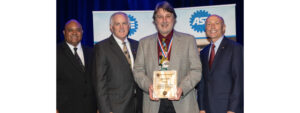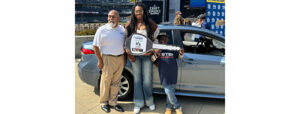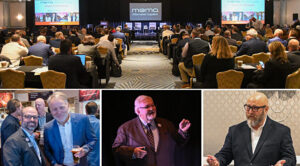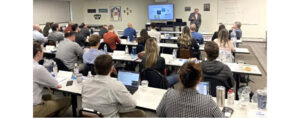Many collision repairs are becoming obsolete as new manufacturing materials arrive along with more advanced electronics and software
San Diego—When motor vehicle technology changes faster than body shops can keep up, it takes new knowledge and resources to run a successful business. Many of the tried-and-true collision repairs are becoming obsolete and no longer relevant.
New vehicle manufacturing materials show up nearly every year, along with more advanced electronics and software. From bumper to bumper, vehicle repair procedures continue to change, including frame rail replacement and frame rail repair, according to an article this week by Chris Bonneau, business manager for the SUN Collision product line.
Frames found in your typical late-model vehicle must absorb a specific amount of collision energy, according to National Highway Traffic Safety Administration (NHTSA) regulations. Because of fuel economy mandates, modern frames must also be lighter and stronger than their predecessors. The result of these requirements is that most modern vehicles are now built on a unibody frame instead of the traditional full-frame setup.
Unibody Frame Rail Repair
Today’s unibody frames are the latest design iteration that began way back in the 1930s. But most car manufacturers in the decades since then have continued to use the body-on-frame design because it was too difficult to mass-produce the unibody design. Fast-forward to the last couple of decades, and the unibody frame has become the go-to design for most vehicles.
From reducing vehicle height and weight to making vehicles more fuel-efficient and safer, the unibody frame is a welcome design change for drivers. But not so much for collision repair centers. Unibody frames feature “crumple zones” designed to absorb damage to protect drivers and passengers, making these single-unit designs more challenging to repair. The result is not only increased frame rail replacement cost, but it also calls for the most updated collision repair skills.
Efficient and accurate unibody car frame rail repair requires specific tools and, most of all, specific, up-to-date OEM information. When your customers’ safety is in your hands, it’s critical to understand precisely when to repair or replace a unibody frame rail.
Sectioning and Frame Rail Repair
Repairing frame damage may require straightening and aligning the unibody structure, cutting out damaged sections, and replacing them with new OEM parts. These collision repair procedures must be performed exactly as manufacturers recommend, or you could end up with an unsafe vehicle and a costly mistake.
Frame rail repairs can be complex and expensive. Therefore, body shops should evaluate if it is cost-effective for frame rail replacement, using sectioning when practical.
Manufacturers build these frames with indicators to tell technicians where to cut and, just as importantly, where not to cut frame rails for sectioning. Some factory seams may be inaccessible after a collision, so frame rail repairs may require sectioning instead of part replacement. Replacing frame rail members at specified seams is pretty straightforward as long as you follow the correct procedures and avoid common pitfalls.
It’s vital to note that high-stress points in frame rail assemblies are reinforced, and any changes or damage to those areas could result in an unsafe repair. When OEM information reveals the following (below), sectioning will not be an option. Instead, a body shop must resort to frame rail replacement parts.
Do Not Section If …
- Sectioning is prohibited by the vehicle manufacturer.
- The repair area is near the suspension or structural mounting locations or a compound structure.
- The damaged area is located in a “crush zone.”
- The frame rail repair is near the drive-train or engine mounts.
When your shop performs frame rail replacement or repair following OEM procedures, the results will be a safe and accurate repair. Once the structural parts have been refinished, you’ll want to apply the recommended corrosion protection. Protect the bare metal and welds inside the frame rail with an interior corrosion solution using a 360-degree wand, and you’ll have a frame rail repair that should last for the life of the vehicle.
Modern Frame Rail Repair Challenges
Unibody frame design undoubtedly helps keep vehicle occupants safer than ever, but repair difficulty and cost may be greater due to the single-unit design. In a collision, damage to a unibody frame can mean bends, crumples, twists, and even separation. Knowing when to repair or replace frame rail sections is essential to ensure the structural integrity of the car.
Specific vehicles will require a unique approach for frame repair, and even the most experienced collision technician can find it difficult to stay current. Many unibody frame rail repairs call for special hydraulic tools and repair technicians who are professionally trained to use them. While much of the effort in frame repair can involve minimal adjustments, even the best repair will be inferior if the frame isn’t straight.
Don’t Forget Those Full Frames
Unibody frames are the most common in modern vehicles, but the full frames that have been around since the first car are still in use. Full frames shouldn’t be new to experienced collision repair professionals, but newer generations may have little experience working with them.
This skill gap can occur because many career and technical colleges strongly emphasize instruction for repairing the more popular unibody construction. Even the best curriculum can include only a passing introduction to something like fixing a rail on full-frame vehicles.
But as most body shop pros can tell you, there are still plenty of full-frame vehicles out there. Many modern SUVs and trucks still feature a full-frame as well as some cars, along with the abundance of older models still on the road.
The introduction of the unibody design led most collision shops to start handling frame repair in-house. Many technicians should know how to straighten unibody frames, but fewer understand the still relevant full-frame procedures.










Comments are closed.